Why you can trust TechRadar
The review model provided to us ran with an Intel Core i7-6600U Skylake processor with integrated Intel HD Graphics 520, 8GB LPDDR3 memory in dual-channel configuration, a 256GB NVMe SATA SSD from Samsung (MZVPV256). It also had an integrated mobile broadband LTE modem, a built-in fingerprint reader and software TPM (Trusted Platform Module) enabled.

Spec sheet
Here is the full Lenovo ThinkPad X1 Yoga configuration sent to techradar for review:
- CPU: Intel Core i7-6600U (2.6GHz with Turbo to 3.6GHz)
- Graphics: Intel HD Graphics 520
- RAM: 8GB LPDDR3
- Screen: 14-inch, 2560 x 1440 resolution IPS
- Storage: 256GB NVMe SSD
- Ports: 3 x USB 3.0, Mini DisplayPort, HDMI, microSD slot, OneLink connector
- Connectivity: Intel Dual Band Wireless-AC (2x2) 8260, Bluetooth 4.1, Integrated Mobile Broadband 4G LTE
- Camera: 720p webcam
- Weight: 1.27kg
- Size: 13.11 x 9.01 x 0.66-inches (W x D x H) (333 x 229 x 16.8mm)
The processor is a dual-core model and only a marginal improvement compared to the Core i5-6200U. It has the same graphics subsystem, a tad more cache and a slightly higher base frequency. All of which is nice, but doesn't fully justify the Core i7 moniker.
You can access the innards of the laptop by taking off the nine screws that keep the bottom plate in place. Sadly, none of the components are user-serviceable.
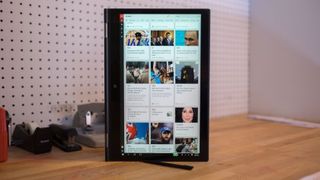
The X1 Yoga comes, by default, with a 4-cell, 52Whr non-upgradable battery with a 45W or 65W PSU. Select the latter (for free) if you want a fast charge (although it is bulkier).
Windows 10 Home is the operating system, a curious choice given the target audience of this device. Windows 10 Pro, as an option, costs £55.20 (around $73, AU$95) extra.
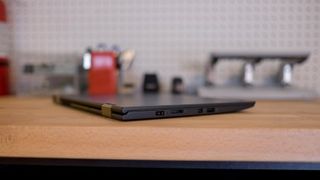
Lenovo bundled an Ethernet adaptor with this hybrid and the company earns extra points for delivering the ThinkPad X1 Yoga in a very nice box. Something the competition should try to emulate.
Another thing that sets the X1 Yoga apart from rivals is that it has passed the stringent MIL-STD-810G test. On top of that it comes with three years on-site warranty.
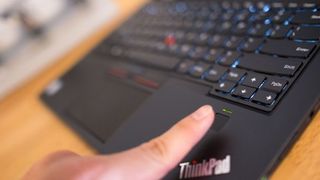
Performance
Given the components on the spec list, we were not disappointed by the performance of this ThinkPad. Here's how the X1 Yoga performed in our suite of benchmark tests:
- GeekBench: Single-core: 3562; Multi-core: 7332
- PCMark 8 Home: 2633
- PCMark 8 Work: 2950
- PCMark 8 Creative: 2584
- PCMark 8 Battery Life: 3 hours 29 minutes
- 3DMark: Sky Diver: 3537; Cloud Gate: 5874; Fire Strike: Did not run
The latter Fire Strike test did not run because of a lack of GPU memory. The numbers were roughly in line with what we'd expect from a mobile Core i7 CPU with an integrated GPU. Battery life was slightly disappointing at just 3 hours 29 minutes in PCMark 8 and that's a shame given that you won't be able to swap the current battery for a higher capacity one.
Note that the fan was almost always on during our tests with temperatures hitting 80 degrees centigrade and upwards, which meant that the underbelly of the beast got quite warm.
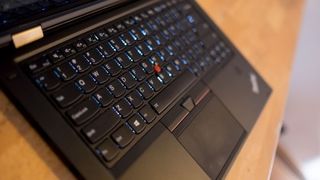
Pricing and competition
Four models are currently available from Lenovo UK. The most expensive one, at £2,440 (around $3,260, AU$4,270), is the only one featuring the famed OLED display as well as a massive 1TB PCIe NVMe SSD, 16GB of RAM and the Core i7-6600U processor.
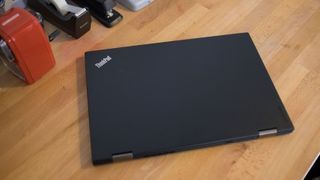
There are only three real competitors with active stylus capability. The Microsoft Surface Book, the HP Spectre Pro 360 G2 and, surprise, surprise, Lenovo's very own ThinkPad Yoga 460. The latter is essentially a more affordable version of the X1 Yoga and a worthy rival to its bigger brother if you don't mind the increase in thickness and weight.
Current page: Specifications, performance and features
Prev Page Introduction and design Next Page Verdict
Désiré has been musing and writing about technology during a career spanning four decades. He dabbled in website builders and web hosting when DHTML and frames were in vogue and started narrating about the impact of technology on society just before the start of the Y2K hysteria at the turn of the last millennium.

